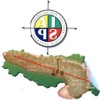Role of EUS in Diagnosis of Autoimmune Pancreatitis
DOI:
https://doi.org/10.6092/1590-8577/1758Keywords:
Meeting Abstracts, PancreasAbstract
Context The diagnosis of autoimmune pancreatitis (AIP) is based on a combination of pancreatic histology, imaging, serology, other organ involvement, and response to steroids. In this setting, endoscopic ultrasound (EUS) is considered the procedure of choice to obtain pancreatic tissue in order to establish the diagnosis and/or to exclude malignancy. However, negative cytology or histology obtained by EUS-FNA does not exclude AIP. In order to further investigate these subgroups of patients, there are two promising imaging tools: real-time EUS elastography of the pancreas and contrast-enhanced EUS. Objective and methods To evaluate the diagnostic yield of EUS in detection of AIP by comparing EUS findings with standard radiological imaging (CT and/or MRI) in patients with suspected autoimmune disease referred to our tertiary center. Results Thirty-two patients with radiological suspicious of AIP underwent EUS. Focal enlargement of pancreatic parenchyma and focal narrowing of main pancreatic duct (MPD) were detected in the same way by MRI and EUS, being both techniques better that CT (12/21, 12/32, and 7/19, respectively). Diffuse pancreatic parenchyma enlargement and detection of multiple stricture of MPD were better identified by EUS (8/19 with CT, 3/21 with RMN, 12/32 with EUS; 1/19 with CT, 1/21 with RMN, 6/32 with EUS, respectively). Focal and diffuse AIP presented hypervascularization pattern after contrast agent injection in the majority of patients (10/13). At elastography, focal AIP presented with a pattern of small spotted mainly blue colour signals that are evenly spread, showing a different pattern from pancreatic cancer. In addition, when targeted masses were unclear on fundamental B-mode EUS imaging, elastography was useful to find the targeted area to biopsy. Conclusion We believe that EUS elastography and contrast-enhanced EUS alone or in combination are promising tools in the diagnostic approach of focal AIP. It seems that in the near future their use might be integrated in the diagnostic algorithms of AIP.


